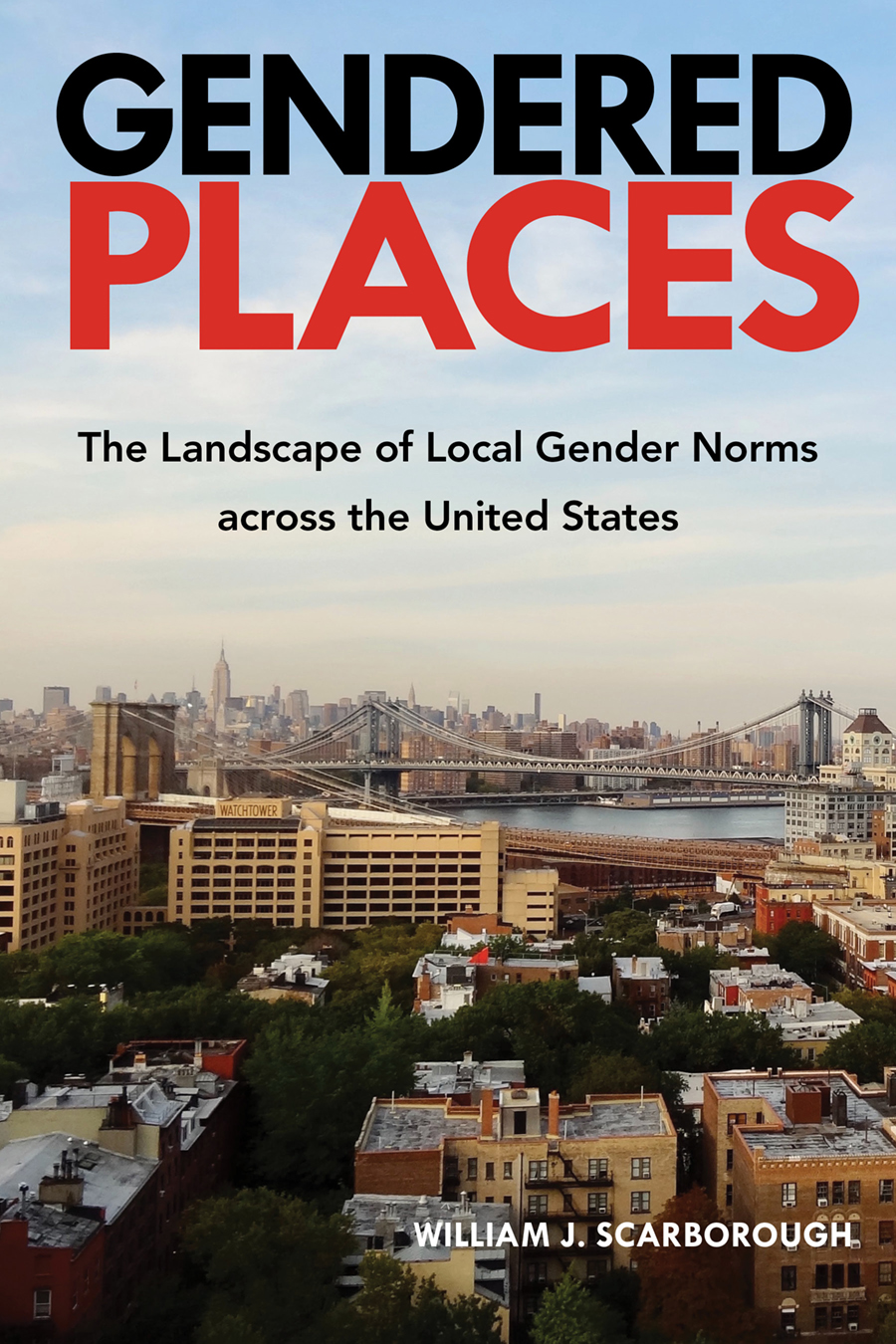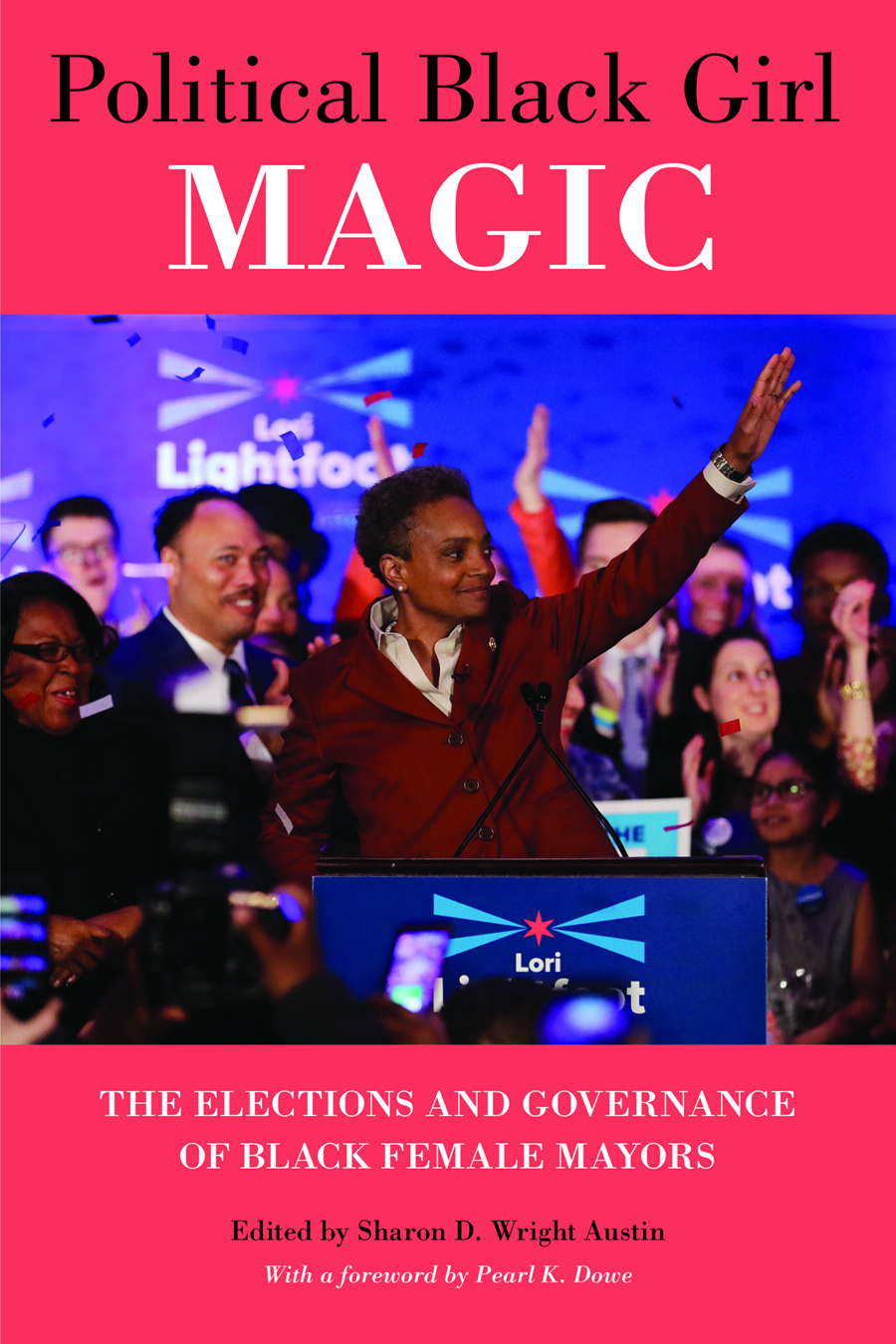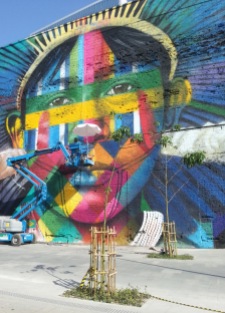This week in North Philly Notes, we celebrate Women’s History Month with a selection of recent, forthcoming, and classic Women’s Studies titles. Take 20% off our Women’s Studies titles this month using the code TWHM23 at checkout! And view all of our Women’s Studies titles here.

New and recent titles
Gendered Places: The Landscape of Local Gender Norms across the United States, by William J. Scarborough
Every place has its quirky attributes, cultural reputation, and distinctive flair. But when we travel across America, do we also experience distinct gender norms and expectations? In his groundbreaking Gendered Places, William Scarborough examines metropolitan commuting zones to see how each region’s local culture reflects gender roles and gender equity.
Ethical Encounters: Transnational Feminism, Human Rights, and War Cinema in Bangladesh, by Elora Halim Chowdhury
Ethical Encounters is an exploration of the intersection of feminism, human rights, and memory to illuminate how visual practices of recollecting violent legacies in Bangladeshi cinema can conjure a global cinematic imagination for the advancement of humanity. By examining contemporary, women-centered Muktijuddho cinema—features and documentaries that focus on the Bangladesh Liberation War of 1971—Elora Chowdhury shows how these films imagine, disrupt, and reinscribe a gendered nationalist landscape of trauma, freedom, and agency.
Are You Two Sisters?: The Journey of a Lesbian Couple, by Susan Krieger
Are You Two Sisters? is Susan Krieger’s candid, revealing, and engrossing memoir about the intimacies of a lesbian couple. Krieger explores how she and her partner confront both the inner challenges of their relationship and the invisibility of lesbian identity in the larger world. Using a lively novelistic and autoethnographic approach that toggles back and forth in time, Krieger reflects on the evolution of her forty-year relationship.



Feminist Reflections on Childhood: A History and Call to Action, by Penny A. Weiss
In Feminist Reflections on Childhood, Penny Weiss rediscovers the radically feminist tradition of advocating for the liberatory treatment of youth. Weiss looks at both historical and contemporary feminists to understand what issues surrounding the inequality experienced by both women and children were important to the authors as feminist activists and thinkers. She uses the writings of Mary Wollstonecraft, Elizabeth Cady Stanton, and Simone de Beauvoir to show early feminist arguments for the improved status and treatment of youth. Weiss also shows how Charlotte Perkins Gilman, a socialist feminist, and Emma Goldman, an anarchist feminist, differently understood and re-visioned children’s lives, as well as how children continue to show up on feminist agendas and in manifestos that demand better conditions for children’s lives.
Women’s Empowerment and Disempowerment in Brazil The Rise and Fall of President Dilma Rousseff, by Pedro A. G. dos Santos and Farida Jalalzai
In 2010, Dilma Rousseff was the first woman to be elected President in Brazil. She was re-elected in 2014 before being impeached in 2016 for breaking budget laws. Her popularity and controversy both energized and polarized the country. In Women’s Empowerment and Disempowerment in Brazil, dos Santos and Jalalzai examine Rousseff’s presidency and what it means for a woman to hold (and lose) the country’s highest power. The authors examine the ways Rousseff exercised dominant authority and enhanced women’s political empowerment. They also investigate the extent her gender played a role in the events of her presidency, including the political and economic crises and her ensuing impeachment.
Motherlands: How States Push Mothers Out of Employment, by Leah Ruppanner
In the absence of federal legislation, each state in the United States has its own policies regarding family leave, job protection for women, and childcare. No wonder working mothers encounter such a significant disparity when it comes to childcare resources in America! Whereas conservative states like Nebraska offer affordable, readily available, and high quality childcare, progressive states that advocate for women’s economic and political power, like California, have expensive childcare, shorter school days, and mothers who are more likely to work part-time or drop out of the labor market altogether to be available for their children. In Motherlands, Leah Ruppanner cogently argues that states should look to each other to fill their policy voids.
Good Reasons to Run: Women and Political Candidacy, edited by Shauna L. Shames, Rachel I. Bernhard, Mirya R. Holman, and Dawn Langan Teele
After the 2016 U.S. Presidential election, a large cohort of women emerged to run for office. Their efforts changed the landscape of candidates and representation. However, women are still far less likely than men to seek elective office, and face biases and obstacles in campaigns. (Women running for Congress make twice as many phone calls as men to raise the same contributions.) The editors and contributors to Good Reasons to Run, a mix of scholars and practitioners, examine the reasons why women run—and do not run—for political office. They focus on the opportunities, policies, and structures that promote women’s candidacies. How do nonprofits help recruit and finance women as candidates? And what role does money play in women’s campaigns?




Forthcoming this Spring
Political Black Girl Magic: The Elections and Governance of Black Female Mayors, edited by Sharon D. Wright Austin
Political Black Girl Magic explores black women’s experiences as mayors in American cities. The editor and contributors to this comprehensive volume examine black female mayoral campaigns and elections where race and gender are a factor—and where deracialized campaigns have garnered candidate support from white as well as Hispanic and Asian American voters. Chapters also consider how Black female mayors govern, from discussions of their pursuit of economic growth and how they use their power to enact positive reforms to the challenges they face that inhibit their abilities to cater to neglected communities.
Solidarity & Care: Domestic Worker Activism in New York City, by Alana Lee Glaser
The members of the Domestic Workers United (DWU) organization—immigrant women of color employed as nannies, caregivers, and housekeepers in New York City—formed to fight for dignity and respect and to “bring meaningful change” to their work. Alana Lee Glaser examines the process of how these domestic workers organized against precarity, isolation, and exploitation to help pass the 2010 New York State Domestic Worker Bill of Rights, the first labor law in the United States protecting in-home workers.




Classic Titles
Gross Misbehavior and Wickedness: A Notorious Divorce in Early Twentieth-Century America, by Jean Elson
The bitter and public court battle waged between Nina and James Walker of Newport, Rhode Island, from 1909 to 1916 created a sensation throughout the nation, with lurid accounts of their marital troubles fueling widespread gossip. The ordeal of this high-society couple, who wed as much for status as for love, is one of the prime examples of the growing trend of women seeking divorce during the early twentieth century. Gross Misbehavior and Wickedness—which takes its title from the charges Nina levied against James for his adultery (with the family governess) and extreme cruelty—recounts the protracted legal proceedings in juicy detail.
Fireweed: A Political Autobiography, by Gerda Lerner
In Fireweed, Gerda Lerner, a pioneer and leading scholar in women’s history, tells her story of moral courage and commitment to social change with a novelist’s skill and a historian’s command of context. Lerner’s memoir focuses on the formative experiences that made her an activist for social justice before her academic career began. Lerner insists that her decades of grassroots organizing largely account for the theoretical insights she was later able to bring to the development of women’s history.
Filed under: african american studies, american studies, asian american studies, civil rights, cultural studies, Education, ethics, gender studies, health, History, immigration, Jewish, Labor Studies, law & criminology, LGBT studies, literature, Mass Media and Communications, political science, race and ethnicity, racism, sexuality, sociology, transnational politics, Urban Studies, women's studies | Tagged: activism, brazil, campaign, children, Cinema, feminism, gender, Gerda Lerner, labor, Motherhood, political science, sexuality, sociology, Women's History, Women's History Month | Leave a comment »









 Bolsonaro’s bravura public appearances in mixing with his followers have not won universal approval. Critical and outspoken Brazilians may be found among groups with high and low incomes. The upper middle class and upper class elites voted for him for president in large numbers, but many have lost their enthusiasm, and some now despise him. Low income Brazilians living packed together in dense communities in large urban agglomerations such as Rio de Janeiro and São Paulo have been unable to practice social distancing, and have little good to say about the government, authorities in general, or presidential antics. The coronavirus is with them, and infection and illness are widespread. Reports in the large circulation daily A Folha de São Paulo (which low income Brazilian cannot afford to buy) record widespread, growing levels of infection in low income neighborhoods, but tend to provide little information about numbers of deaths.
Bolsonaro’s bravura public appearances in mixing with his followers have not won universal approval. Critical and outspoken Brazilians may be found among groups with high and low incomes. The upper middle class and upper class elites voted for him for president in large numbers, but many have lost their enthusiasm, and some now despise him. Low income Brazilians living packed together in dense communities in large urban agglomerations such as Rio de Janeiro and São Paulo have been unable to practice social distancing, and have little good to say about the government, authorities in general, or presidential antics. The coronavirus is with them, and infection and illness are widespread. Reports in the large circulation daily A Folha de São Paulo (which low income Brazilian cannot afford to buy) record widespread, growing levels of infection in low income neighborhoods, but tend to provide little information about numbers of deaths.
 Mobilizing Science
Mobilizing Science PUBLIC SECURITY. There were reportedly 26,000 uniformed security workers on duty in Rio de Janeiro on championship game day. These included the heavily armed soldiers of the National Security Force, Rio state police, the Rio de Janeiro Guarda Municipal, the Metro police, and finally unarmed employees of private security companies. The ugliest confrontation was near the Maracanã stadium where manifestantes (protestors) were protesting the World Cup. Nationwide anti-World Cup protests in principal cities began months before the first game and continued into the last game, but they were small by the standards of the June 2013 mass protests in Brazilian cities that numbered millions. This protest counted only 300, but the anti-World Cup protests continually rattled authorities and almost always took place in an atmosphere of police intimidation and violence. Sunday’s championship game was no exception as the Rio state police including a cavalry unit moved against the protesters and journalists covering the protest. Police broke or destroyed some of their equipment. At least 10 people were injured with some taken to hospital. In one example of police overreaction, an entire middle class neighborhood was sealed off for a few hours when residents were not allowed to return to their homes.
PUBLIC SECURITY. There were reportedly 26,000 uniformed security workers on duty in Rio de Janeiro on championship game day. These included the heavily armed soldiers of the National Security Force, Rio state police, the Rio de Janeiro Guarda Municipal, the Metro police, and finally unarmed employees of private security companies. The ugliest confrontation was near the Maracanã stadium where manifestantes (protestors) were protesting the World Cup. Nationwide anti-World Cup protests in principal cities began months before the first game and continued into the last game, but they were small by the standards of the June 2013 mass protests in Brazilian cities that numbered millions. This protest counted only 300, but the anti-World Cup protests continually rattled authorities and almost always took place in an atmosphere of police intimidation and violence. Sunday’s championship game was no exception as the Rio state police including a cavalry unit moved against the protesters and journalists covering the protest. Police broke or destroyed some of their equipment. At least 10 people were injured with some taken to hospital. In one example of police overreaction, an entire middle class neighborhood was sealed off for a few hours when residents were not allowed to return to their homes. Yet another originality, or at least unusual, is the system of election courts (tribuna eleitoral) which like labor courts are organized throughout the country in regional jurisdictions. There is a supreme court. In 2017, its members in sharply divided opinions voted 3 to 2 not to cancel the candidacy, and therefore of election of Michel Temer as Vice-President in 2014. Among the charges against him: Accepting illegal campaign contributions. While Temer survived, other executive branch office holders have not. In 2017, the judiciary has removed on average one mayor a week on charges of corruption.
Yet another originality, or at least unusual, is the system of election courts (tribuna eleitoral) which like labor courts are organized throughout the country in regional jurisdictions. There is a supreme court. In 2017, its members in sharply divided opinions voted 3 to 2 not to cancel the candidacy, and therefore of election of Michel Temer as Vice-President in 2014. Among the charges against him: Accepting illegal campaign contributions. While Temer survived, other executive branch office holders have not. In 2017, the judiciary has removed on average one mayor a week on charges of corruption. Clearly, the middle and upper classes benefit from BRTs, the new metro line, and the opening of long downtown tunnels where traffic flow is not interrupted. They reduce travel time, and demonstrate contemporary big city public transportation at its best. But will new bus and expanded metro service be within reach of low wage workers and their families, many of whom live in favelas, and distant suburbs? They commonly earn the monthly minimum wage of approximately $300. The cost of a month’s travel to and from work taking the BRT and metro has been calculated as 1/3 of a minimum salary. Without employer paid travel to work, as might be the case in the informal economy, the cost will be too great for someone earning the minimum wage. The job seeker will look for work close to home. Moving beyond work to leisure, the cost of public transportation to and from Porto Maravilha can also be high. This reinforces a tendency of residents of poor communities to stay at home, to turn inward and be more community bound than they might want. Often overlooked is the frugality of Rio’s low wage workers as they budget for basics such as food, clothing, rent and transportation. Perhaps for these reasons, authorities have considered the option of free rides on the new light rail tram that passes through Porto Maravilha. No doubt they felt a need to show good faith in putting its attractions within reach of as many of Rio’s communities as possible, even more so in the midst of hard fought municipal elections.
Clearly, the middle and upper classes benefit from BRTs, the new metro line, and the opening of long downtown tunnels where traffic flow is not interrupted. They reduce travel time, and demonstrate contemporary big city public transportation at its best. But will new bus and expanded metro service be within reach of low wage workers and their families, many of whom live in favelas, and distant suburbs? They commonly earn the monthly minimum wage of approximately $300. The cost of a month’s travel to and from work taking the BRT and metro has been calculated as 1/3 of a minimum salary. Without employer paid travel to work, as might be the case in the informal economy, the cost will be too great for someone earning the minimum wage. The job seeker will look for work close to home. Moving beyond work to leisure, the cost of public transportation to and from Porto Maravilha can also be high. This reinforces a tendency of residents of poor communities to stay at home, to turn inward and be more community bound than they might want. Often overlooked is the frugality of Rio’s low wage workers as they budget for basics such as food, clothing, rent and transportation. Perhaps for these reasons, authorities have considered the option of free rides on the new light rail tram that passes through Porto Maravilha. No doubt they felt a need to show good faith in putting its attractions within reach of as many of Rio’s communities as possible, even more so in the midst of hard fought municipal elections.



